Valorant Agent Release Schedule: Timeline, Roles & Agent Evolution
Updated On: November 12, 2025 by Aaron Connolly
Valorant Agent Release Schedule Overview
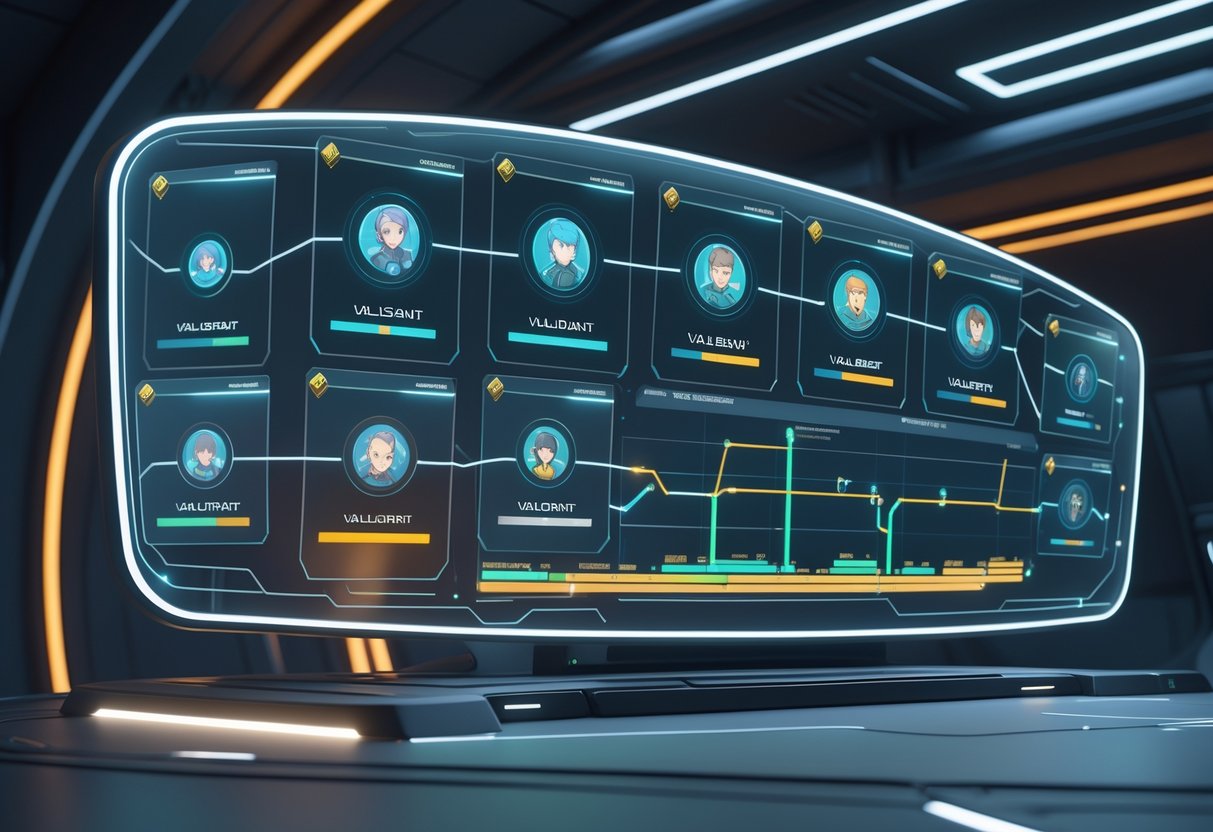
Riot Games usually sticks to a pretty regular pattern for rolling out new Valorant agents, dropping about 4-6 each year since the game launched in 2020.
If you know when agents are coming, you can actually plan your gameplay and keep up with the shifting meta.
Why Agent Release Dates Matter
If you keep track of new agent releases, you can adjust your competitive strategy and get a head start on learning their kits.
Every time a new agent drops, the meta shifts. Teams scramble to create fresh comps, and pros adapt almost overnight.
Most of the time, new agents become meta picks within a few weeks. Pro teams waste no time building strategies around them.
Honestly, if you want an edge in ranked, you really should watch the release schedule.
Agent releases shake up several things:
- Team comps
- Map control
- Economy management
- Counter-play tactics
Try to learn new agents as soon as they launch. The first week is chaos—everyone’s experimenting, so it’s the perfect time to spot strengths and weaknesses before they settle into the meta.
Agent Launch Patterns
Riot tends to release new agents every 2-3 months, usually at the start of a new Episode or Act.
Here’s the basic timeline:
- Episodes: Big content drops every 6 months
- Acts: Smaller updates every 2 months
- Agent frequency: 4-6 new agents each year
Riot usually reveals agents about 1-2 weeks before release, building hype and collecting feedback. They often run beta tests during this window.
This pattern’s held steady since 2020. Unless something major changes, expect Riot to keep up the same reliable schedule.
If you want to stay competitive, plan your agent mastery around these release windows.
How Riot Games Announces New Agents
Riot goes all-in on announcements, starting with cryptic teasers and dev blogs. The Valorant Twitter account almost always drops the first hints.
Here’s how they roll out new agents:
- Cryptic teasers on social (1-2 weeks out)
- Ability reveals in dev videos
- Official trailer with gameplay
- Release date confirmation in patch notes
Dev blogs go into detail about agent roles and abilities. These posts help you figure out how new agents fit into team comps.
YouTube trailers show agents in action, and you can actually see how their abilities play out. Community creators sometimes get early access, so you might catch some gameplay before the official launch.
Complete Timeline of Valorant Agent Releases

Valorant started with 10 agents in beta, then added Reyna for the full release in June 2020. Riot Games has kept a steady pace since, usually adding new agents every couple of months with big patches.
Original Agent Launches
The closed beta kicked off on April 7, 2020, with 10 agents right out of the gate. These were Brimstone, Jett, Phoenix, Sage, Sova, Viper, Cypher, Omen, Breach, and Raze.
Each agent fit into one of four roles: Duelists, Controllers, Initiators, and Sentinels. Jett and Phoenix led the charge as duelists, while Sage handled healing and resurrection as a sentinel.
During beta, Riot tested balance and let players unlock agents by playing matches and finishing daily missions.
When Valorant officially launched on June 2, 2020, Reyna joined as the 11th agent. She brought a new duelist flavor with her soul orb and self-sustain mechanics.
Post-Launch Additions
After launch, Riot got into a rhythm: new agent with each act. Killjoy arrived in August 2020 for Act II, bringing sentinel gadgets like her turret and alarm bot.
Skye showed up in October 2020, offering healing and scouting as an initiator. Her animal-themed kit helped teams gather info and stay healthy.
In 2021, three new agents made their debut. Yoru dropped in January as a teleporting, deceptive duelist. Astra came in March, shaking up the controller role with cosmic, map-wide abilities.
KAY/O rounded out the year in June 2021. As a robot initiator, he could suppress enemy abilities, opening up new teamplay options.
Latest Agents
Lately, Riot’s focused on adding more tactical diversity to existing roles. Chamber launched in November 2021, mixing sentinel utility with sharpshooting and repositioning tools.
Neon sprinted in during January 2022, giving duelists a speed boost with her sprint and slide mechanics. Fade joined in April 2022, bringing nightmare-themed info gathering as an initiator.
Recent additions include Harbor (October 2022) with water-based controller skills, Gekko (March 2023) and his creature companions, and Deadlock (June 2023), a Norwegian sentinel. Iso entered the roster in October 2023 as a duelist, and Clove arrived in March 2024 as an immortal controller.
Vyse just landed in August 2024, adding metal-based sentinel abilities. Now there are 25 agents across all four roles, and Riot shows no signs of slowing down.
List of Valorant Agents by Release Order
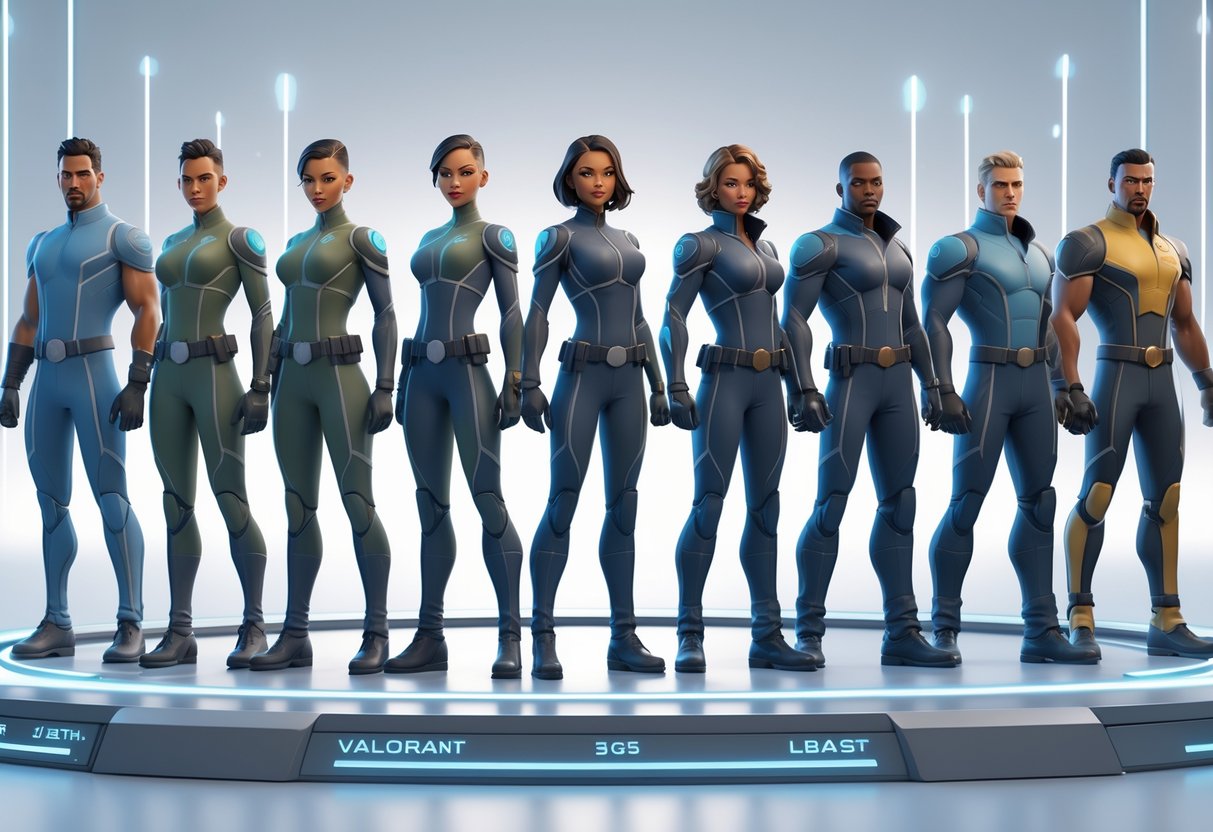
Valorant started with 10 agents in 2020 and has grown to 27 by 2025. Every new agent comes with a specific patch and shakes up the tactical roles in the meta.
Patch and Episode Highlights
Riot’s release pattern for agents has stayed pretty consistent. New agents usually show up every two episodes, keeping the game balanced and adding depth.
Episode 1 brought the original 10 agents at launch in June 2020: Brimstone, Viper, Omen, Cypher, Sova, Sage, Phoenix, Jett, Raze, and Breach.
Reyna joined in Episode 1 Act 1, bringing aggressive duelist play that rewarded solo skill.
Episode 2 introduced Killjoy as a sentinel. Her lockdown abilities changed how teams held sites.
Skye arrived in Episode 2 Act 1 as an initiator, blending healing and info-gathering in a way that bridged controller and support.
Episode 3 delivered Yoru, a duelist all about deception and flanking. His teleport and clone tricks added mind games to the mix.
Astra launched in Episode 2 Act 2 as a controller, giving teams global map control with her cosmic skills.
Role Introduction with Each Agent
Each new agent brings something unique to their role. Duelists like Reyna and Yoru focus on entry frags and big plays.
Controllers such as Astra and Omen change how teams control the map. Astra’s global smokes really shook up strategy.
Initiators like Skye and Sova gather info and set up their teams. Skye stands out by healing as well as scouting.
Sentinels such as Killjoy and Cypher anchor defenses. Killjoy’s lockdown ultimate totally changed post-plant and retake tactics.
New agents keep pushing the boundaries of each role. Riot always tries to fill tactical gaps without breaking the game’s balance.
Riot spaces out releases so the meta can adapt. This way, players don’t feel overwhelmed, but things never get stale.
Evolution of Agent Release Cadence
Since Valorant launched in 2020, Riot’s stuck to a steady agent release schedule. You can spot clear seasonal patterns if you look back. They usually drop about three agents a year, and the timing reflects how much they care about game balance and content quality.
Year-by-Year Release Trends
2020 was wild—Valorant dropped with 11 agents on June 2. That included the original 10 and Reyna at launch.
After launch, Riot quickly shifted to a three-agents-per-year pace.
2021-2024 kept this rhythm. Every year brought three new agents, spaced about four months apart. This made it easy to anticipate new content, and Riot got enough time to test and balance things.
2025 looks like more of the same. Riot seems to prefer quality over quantity, and honestly, that’s probably the right call for agent development.
They learned fast that dumping too many agents at once just wrecks balance. Their measured releases keep the meta interesting without overwhelming everyone.
Seasonal Release Insights
Riot ties agent releases to their episode structure. New agents usually arrive at the start of a new act, which always gets players hyped.
Episode launches are the big moments. That’s when most people come back to check out the new agent.
Riot spaces releases to keep the game feeling fresh between major updates. It’s smart—it keeps players coming back and trying new stuff.
Balance always comes first. Riot puts agents through tons of pro play testing before moving on to the next one.
They’ve ignored calls for faster releases. Other games have overloaded their rosters and paid the price, so Riot sticks to their guns for long-term health.
Impact of New Agent Releases on Gameplay
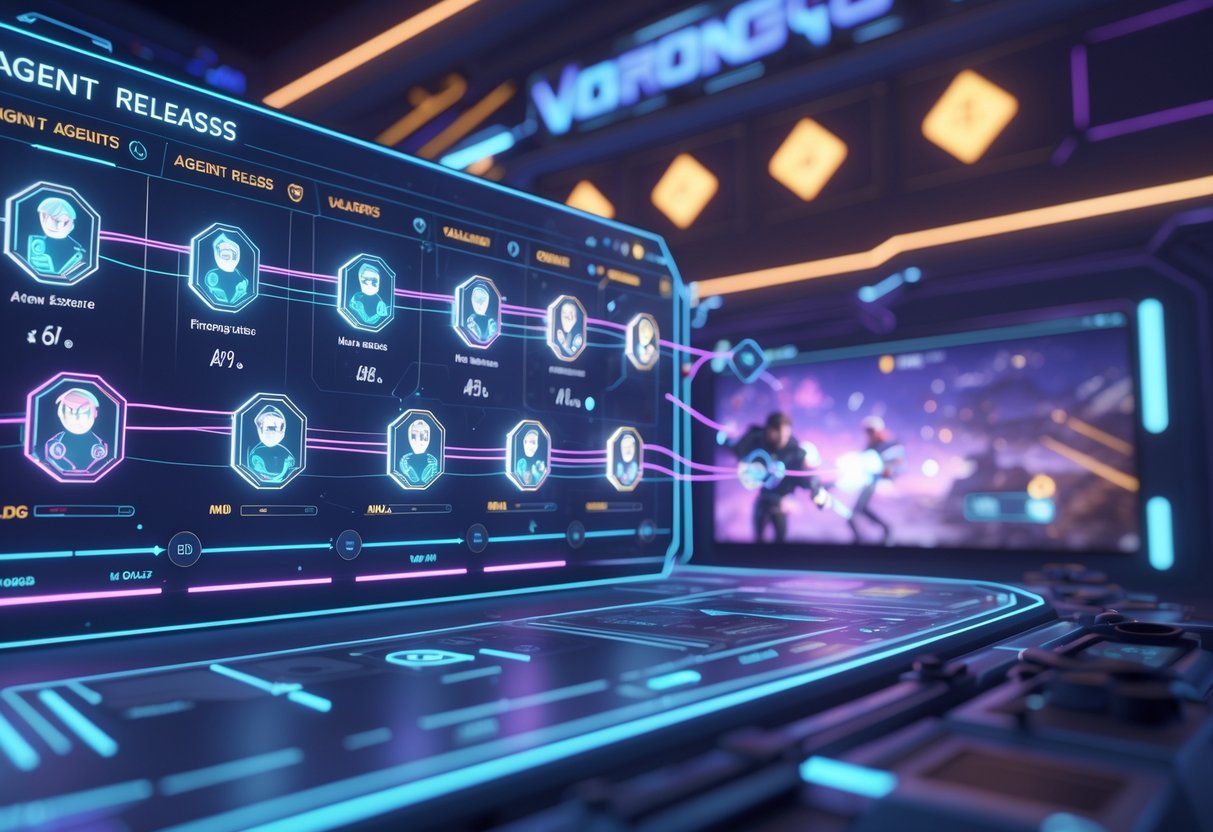
Every time Riot drops a new agent, the whole game changes. Teams have to rebuild strats and adapt if they want to keep up.
Shift in Competitive Meta
A new agent always sends shockwaves through the scene. When Chamber launched in November 2021, he took over the sentinel role so completely that other defensive agents barely got picked.
Controllers like Astra and Harbor rewrote the book on map control. Astra could smoke off bombsites from anywhere, forcing attackers to rethink their entire approach.
The balance between agent roles keeps shifting. Duelists like Neon brought a new speed to entries, and her sprint made defenders rethink their setups.
Sometimes, agents become meta staples overnight. Other times, it takes a while—Yoru struggled at first but found his place after a rework in 2022.
Initiators like KAY/O changed how teams fight. His suppression could directly counter enemy abilities, opening up new tactics that just weren’t possible before.
Team Strategy Adjustments
Pro teams spend weeks reworking their tactics after every new agent. Coaches scramble to come up with new strats and counters.
Agent bans and picks in tournaments show how much the meta shifts. Teams often ban new agents until they figure out how to play against them.
Practice hours go up after every agent drop. Teams grind utility combos and new timings, which totally changes prep for big events.
Players need to stay flexible. If you main controllers, you might have to learn new smoke setups overnight. Sentinel mains have to adjust to new gadgets and defensive tools.
Map control strategies always evolve with new agents. Gekko’s creatures, for example, gave teams new ways to clear angles and gather info, so everyone had to rethink their default positions and rotations.
Spotlight on the First Five Agents
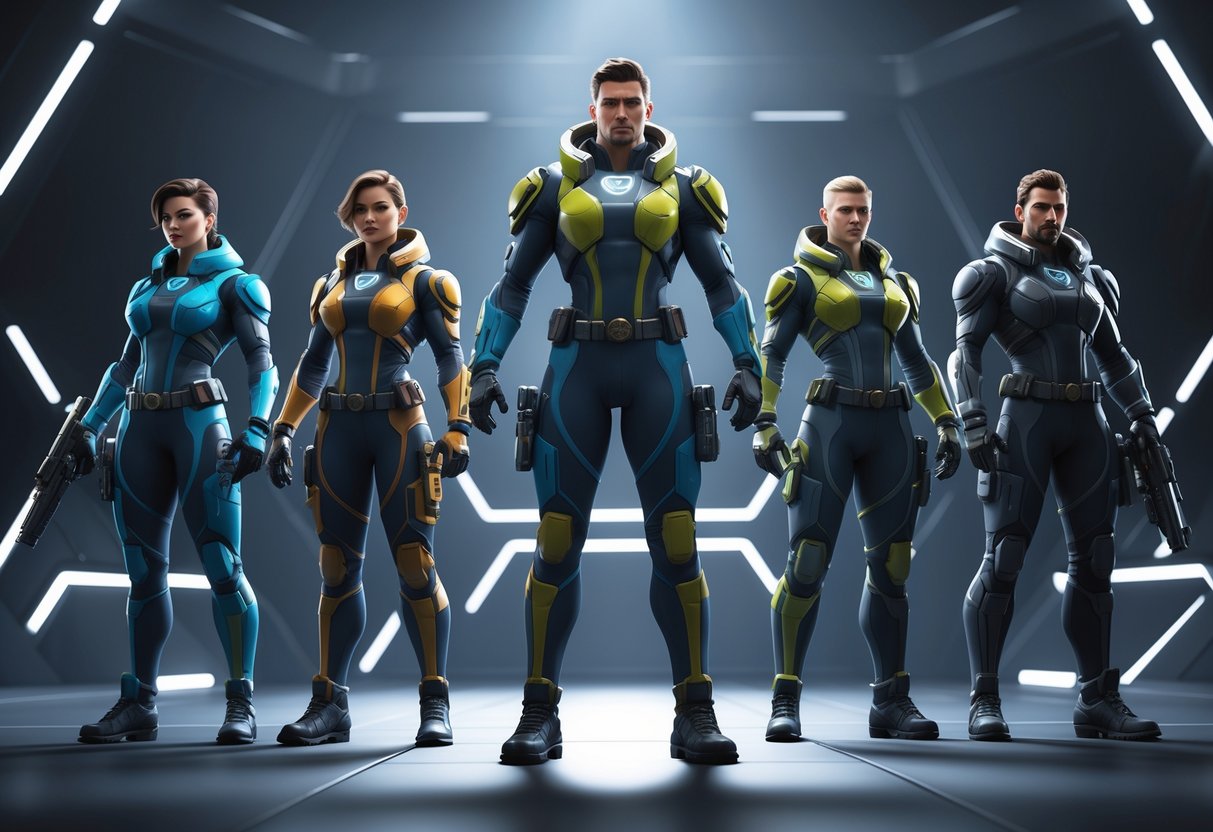
When Valorant dropped in 2020, five core agents really set the stage for tactical gameplay. These characters shaped the early meta and taught players about role-based team comps—something that’s still vital.
Brimstone, Phoenix, Sage, Sova, and Jett
Brimstone introduced traditional controller abilities as Valorant’s first smoker. He can drop three smoke orbs anywhere on the map with a handy tactical overlay.
His Stim Beacon speeds up team firing in a small area. Incendiary burns enemies over time, and his Orbital Strike ultimate just melts anyone caught in its path.
Phoenix quickly became the duelist for aggressive entry fragging. His Flash throws curved projectiles to blind enemies around corners.
Hot Hands lays down fire that hurts anyone standing in it. Blaze puts up a wall of fire, great for map control. His Run It Back ultimate lets you respawn at your original spot after dying—pretty wild.
Sage made her mark as the must-have healer and defensive anchor. Her Healing Orb brings teammates’ health back over time.
Slow Orb drops ice fields to slow enemies. Barrier Orb pops up a big wall to block sites. Her Resurrection ultimate brings a teammate back with full health.
Sova set the standard for initiators with his info-gathering kit. Shock Bolt hits enemies around corners with bounce shots.
Owl Drone scouts ahead and can tag enemies with tracking darts. Recon Bolt shows enemy positions through walls. His Hunter’s Fury ultimate blasts energy across the map.
Jett changed the game with insane mobility as the go-to duelist. Updraft launches her upward, and Dash lets her zip to safety or into the action.
Cloudburst pops quick smoke screens for cover. Her Blade Storm ultimate gives her throwing knives that refresh on kills—perfect for risky, aggressive plays.
Early Meta and Play Styles
Those first five agents basically created Valorant’s original competitive meta. Teams usually ran one controller, one healer, one info-gatherer, and two entry fraggers.
Sage dominated almost every lineup. Her healing and resurrection were so strong, teams picked her in 90% of early tournaments.
Teams did everything they could to keep Sage alive. Her Barrier Orb was a lifesaver for post-plant and retake moments.
Brimstone and Sova made a killer pair in tactical rounds. Sova’s Recon Bolt gave away enemy spots, while Brimstone’s smokes covered rotations.
That combo worked best on maps like Haven and Bind. Teams could pull off precise site takes with all that info and area control.
Phoenix and Jett gave teams different duelist flavors. Phoenix thrived on self-sufficiency with his healing and respawn ultimate.
Jett, meanwhile, just went all-in on aggression and escape. Her movement made her a nightmare for defenders and great for fast rotations.
Early Valorant rewarded smart, methodical play. Teams that knew how to use their utility and trade kills usually beat squads relying just on sharp aim.
Role Breakdown: Duelists
Duelists serve as entry fraggers in Valorant. They’re built to push sites first and take those dicey opening fights.
These agents recharge their signature abilities with two kills instead of waiting on a timer, which encourages them to play aggressively.
Key Duelist Agents and Their Releases
Jett arrived with Valorant’s launch in June 2020. Her dash and updraft made her the most popular duelist right away.
Her mobility kit just fits aggressive play. Some pro players basically built their entire careers around Jett.
Phoenix also showed up at launch. His self-heal and flash made him a solid pick, especially for newer players.
Raze joined during the beta. Her explosives—rocket launchers and grenades—gave duelists a new way to deny areas.
Reyna entered in Episode 1, Act 1 (June 2020). She’s all about fragging, with abilities that only activate after getting kills.
Yoru showed up later in Episode 2, Act 1 (January 2021). His teleport and invisibility brought a trickier, more strategic style.
Neon dashed into the game in Episode 4, Act 1 (January 2022). She literally runs and slides around—speed is her thing.
Iso joined as the latest duelist in Episode 7, Act 2 (October 2023). His shield and ultimate duel added some defense to the role.
Role Influence
Duelists have shaped Valorant’s meta more than any other class. Jett’s mobility pretty much defined early gameplay.
Pro teams built entire playbooks around which duelists they picked. Jett players often became the main fraggers and sometimes even team leaders.
Riot tried to keep duelists in check over time. Jett, for example, got several nerfs to her dash and ultimate.
New duelists like Iso bring more team-focused utility. It’s clear Riot wants duelists to be less selfish in how they play.
The ability recharge system pushes duelists to seek out fights. That leads to natural aggression, which sets the pace for each round.
There are eight duelists in the game now. That’s more than any other role, so teams have tons of choices for their entry fraggers.
Role Breakdown: Sentinels
Sentinels act as the defensive backbone for Valorant teams. Six agents have joined over different episodes, each boosting site control and team support in different ways.
These agents keep changing how teams approach defense and site anchoring.
Essential Sentinel Releases
Sage debuted in June 2020 as the original healing support. Her wall and resurrection made her almost a must-pick in early competitions.
Cypher also launched at the start, gathering intel with his camera and trapwires. His cage smokes and tracking ultimate helped teams lock down sites.
Killjoy landed in August 2020, bringing area denial with her turret and alarmbot. Her lockdown ultimate forced teams to rethink how they execute and retake sites.
Chamber joined in November 2021, focusing on long-range duels. His teleports and heavy-hitting weapons made him a pro favorite—at least until he got nerfed.
Deadlock arrived in June 2023, with crowd control via net walls and sonic sensors. Her cocoon ultimate can yank enemies out of position.
Vyse became the latest sentinel in August 2024. She manipulates metal and controls space with unique traps.
Defensive Shifts in the Game
Early Valorant revolved around Sage and Cypher on most maps. Teams leaned on Sage’s healing and walls to hold sites.
Chamber’s release totally shook up the meta in 2022. His mix of mobility and firepower made him dominant, until Riot stepped in with nerfs.
Killjoy and Deadlock gave teams more choices for site control. That helped break Cypher’s monopoly on information gathering.
Modern sentinel play is all about flexibility. Teams pick sentinels for map control, not just healing or info.
Vyse’s arrival shows Riot still wants to expand defensive options. Her metal-based abilities let teams try site control tricks older sentinels just couldn’t pull off.
Role Breakdown: Initiators
Initiators have changed a ton—from simple info agents to full-on playmakers who can swing a round. It started with Sova’s arrows and now there’s Gekko with his little creatures.
Major Initiator Additions
Sova launched as the OG initiator, setting the tone with recon arrows and his drone. His whole kit focused on revealing enemies through walls and long lines of sight.
Breach showed up alongside Sova, but he stunned and displaced enemies with seismic blasts. His abilities hit through walls, making him great for coordinated team plays.
Skye joined in October 2020 and shook things up by mixing healing with initiation. Her flash birds and healing made her the first initiator who could really support the team, not just gather info.
KAY/O introduced suppression in June 2021. He can shut down enemy abilities with his knife and ultimate, which totally changed how teams attack ability-heavy comps.
Fade came in April 2022, using fear-based crowd control. Her nightmares and prowlers clear angles and track enemies in a way flashes and stuns never did.
Gekko landed in March 2023. His creatures scout ahead and can be picked up for reuse, giving teams more utility over long rounds.
Playmaking Changes
Old-school initiators like Sova needed teammates to follow up on the info he found. His arrows gave you the enemy’s spot, but someone else had to act on it.
Modern initiators do more themselves. KAY/O can suppress and then immediately swing with his gun. Fade puts pressure on enemies and can chase them down herself.
Gekko is the latest step—his creatures go out, scout, then come back for another round. That makes utility last longer and changes how teams manage their economy.
The role moved from passive support to active engagement. Breach needs tight timing with teammates, but KAY/O and Fade can set up their own plays.
Teams now plan around initiator ultimates as main tools, not just support. Sova’s drone and ultimate together can clear a site solo, making him a legit fragger, not just an info bot.
Role Breakdown: Controllers

Controllers shape team fights by cutting off vision and locking down parts of the map. Six controller agents have joined since launch, each bringing their own style of smokes and area denial.
Controller Agent Releases
The first three controllers came with Valorant’s beta on April 7, 2020. Brimstone gave teams simple smoke placement with Sky Smoke. Omen added teleportation and shadow smokes. Viper used poison walls and clouds to deny space.
Astra landed on March 2, 2021, with a cosmic vibe. She lets you place stars anywhere for smokes, stuns, and pulls. That gave teams a whole new level of strategic control.
Harbor joined on October 18, 2022, with water-based skills. His Cascade and High Tide walls curve to fit the map, not just run in straight lines.
Clove became the latest controller on March 26, 2024. They let teams keep map control even after getting eliminated, thanks to post-death utility.
Tactical Map Control Evolution
Early controllers like Brimstone kept things simple—just block common angles and run basic site takes. Omen added movement with his teleports, so controllers could shift positions mid-round.
Viper changed how teams thought about map control. Her poison walls split maps in half for good. Pro teams started using her to isolate bomb sites completely.
Astra took things to a new level with global ability placement. Teams could coordinate smokes all over the map at once. Her recall meant you didn’t always waste utility.
Harbor’s curved walls fit around corners and weird map geometry. Teams now have more creative ways to block sightlines and control space.
Recent Agent Releases and What’s Next
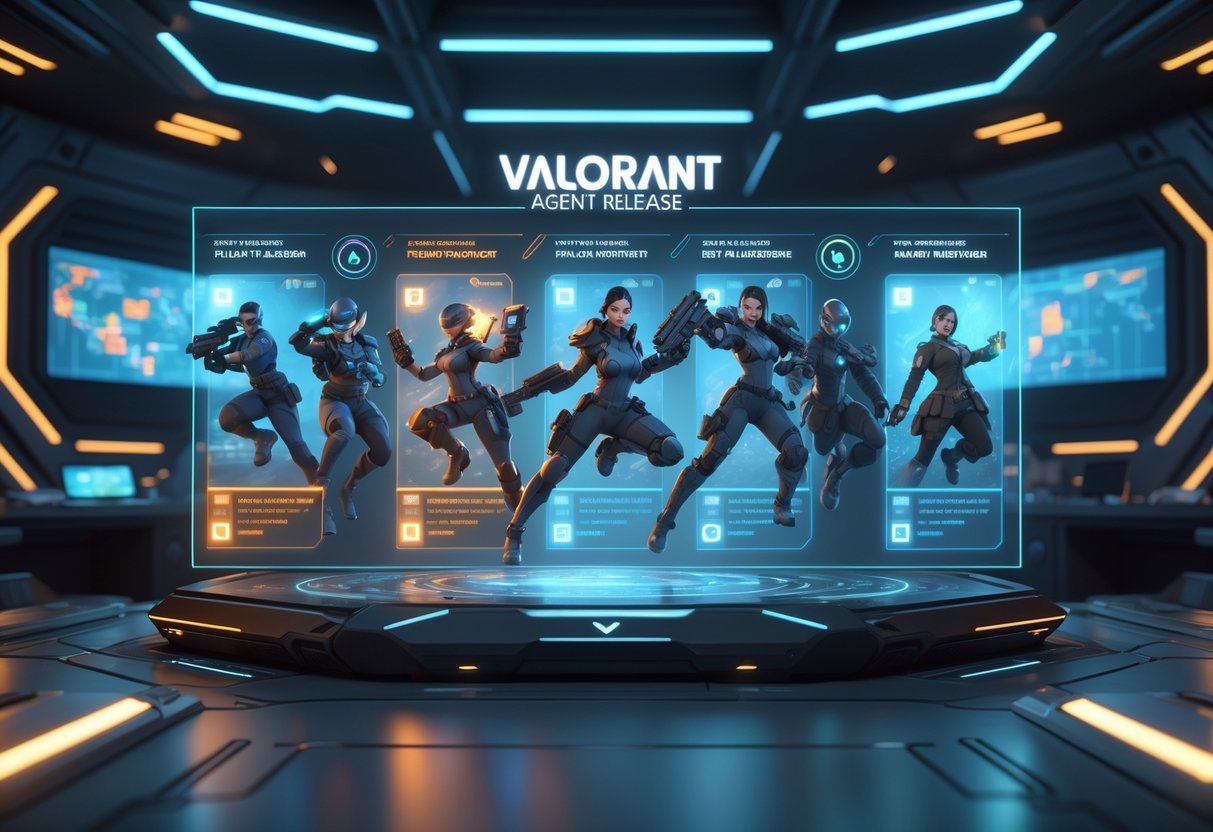
Riot Games keeps expanding Valorant’s roster, rolling out new agents about every other season. These additions bring fresh tactical options to competitive play.
Valorant now offers 27 playable characters. Recent agents like Tejo really show how Riot keeps tweaking and evolving team strategies.
Latest Agent Launches
Tejo joined Valorant’s lineup in 2025. Riot seems pretty committed to shaking up tactical choices for players.
We’ve seen agents like Vyse, Clove, and Iso each add something new. Vyse lets you control map areas in ways we hadn’t seen before.
Clove came in with a fresh take on smoking abilities. Iso? He’s all about winning those tense one-on-one duels.
Every new agent launch shakes up the competitive meta. Teams scramble to adapt, figuring out how these new abilities fit into their strategies.
Players usually spend weeks testing lineups and learning counters. It’s a mad dash to figure out what works and what doesn’t.
Riot announces upcoming agents a few weeks before release. That window gives the community time to speculate and theorycraft.
Predictions for Future Updates
We’ve seen some leaks about Agent 29. Supposedly, he’s a male character with abilities that counter enemy utility.
Early rumors hint at a unique regional background and some unusual weapon interactions. Who knows if the leaks are legit, but it’s fun to guess.
Riot seems to alternate agent roles with each new release. Lately, they’ve focused on controllers and initiators.
Chances are, the next few agents will help balance out the roster. Riot looks at pro play data to spot gaps and figure out what’s missing.
Teams want more options for certain map control situations. Riot pays attention and tries to fill those needs.
We usually see new agents every other season. That means 2-3 fresh faces each year, which feels about right.
Riot tries to keep things exciting but doesn’t want to overwhelm everyone with constant changes.
Frequently Asked Questions
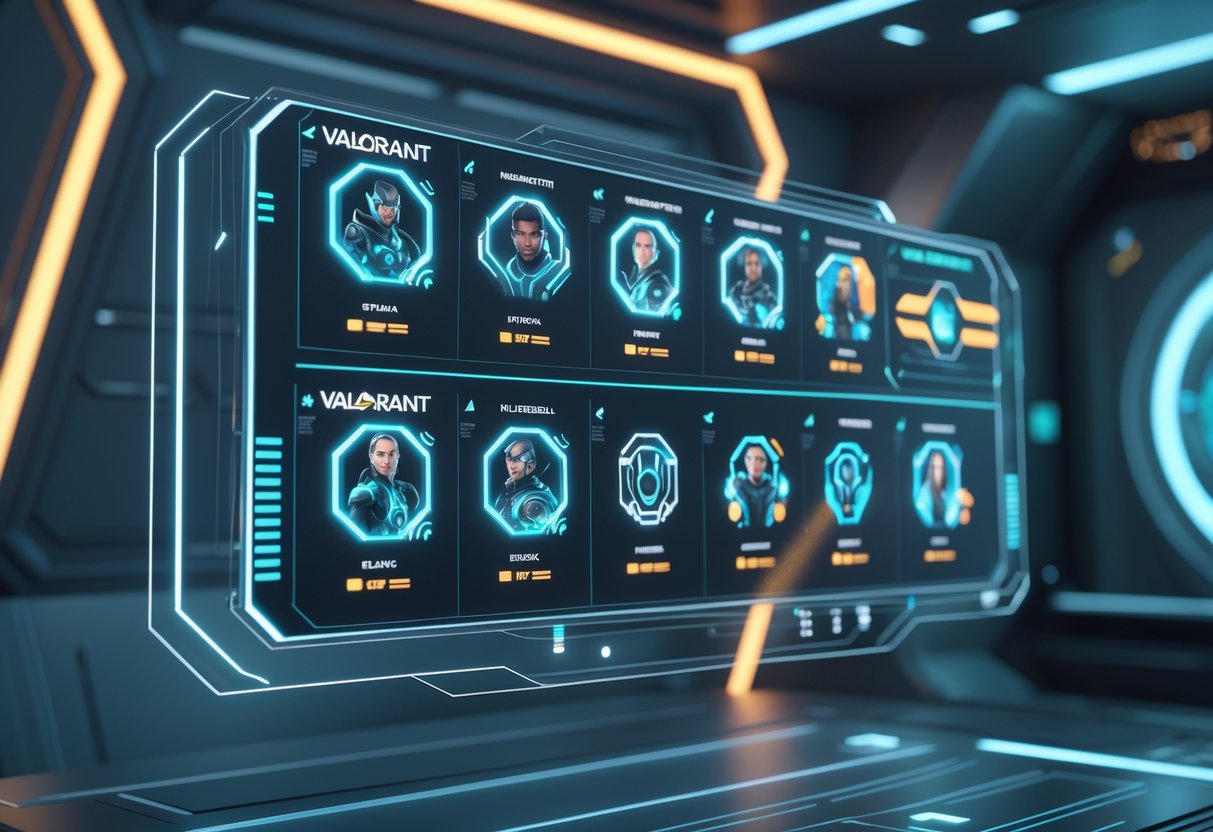
Players always wonder when the next agent is coming and what surprises are in store. Riot has a pretty steady release pattern, so most people can plan ahead.
What’s the schedule for new agents joining Valorant?
Riot usually rolls out new agents every other Act. That works out to about 3-4 new characters a year.
They tend to announce agents a few weeks before launch, showing off teasers and ability previews during that time.
Could you tell me when the next agent is set to arrive?
Riot hasn’t dropped an exact date for the next agent yet. If they stick to their usual pattern, we’ll probably see the next character in late 2025 or maybe early 2026.
They love to tease things on social media first. If you want the latest, keep an eye on Valorant’s official Twitter.
How often does Valorant introduce a new character to play?
New agents show up every 10-16 weeks, lining up with the start of new Acts. That’s when Riot usually delivers big updates.
Valorant started with just 10 agents back in 2020. Now, in 2025, the roster’s grown to more than 25.
What can we expect from the upcoming agent in terms of abilities and role?
Riot tries to balance new agents across different roles. They don’t want to stack too many in one category.
They keep pushing for unique mechanics. The latest agents have brought new ways to control space or help teammates.
Are there any hints about the theme or backstory of the next agent to be released?
Riot drops lore teasers before new agents show up. You’ll see mysterious emails, website updates, or cryptic posts on social media.
They like to build hype with little clues about an agent’s backstory or personality. Fans usually piece things together in the forums, and half the fun is guessing what’s next.
Has the release date for the next Valorant agent been announced yet?
Riot Games hasn’t confirmed an official release date for the next agent yet.
They tend to share those details about two or three weeks before the actual launch.
If you’re waiting for news, check Valorant’s official website or their social media channels.
The game client also gives you a heads-up when big announcements are on the way.

